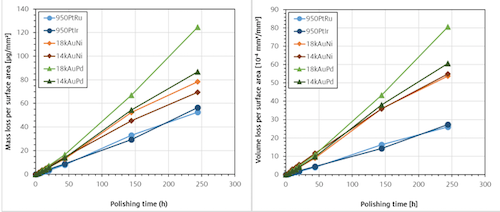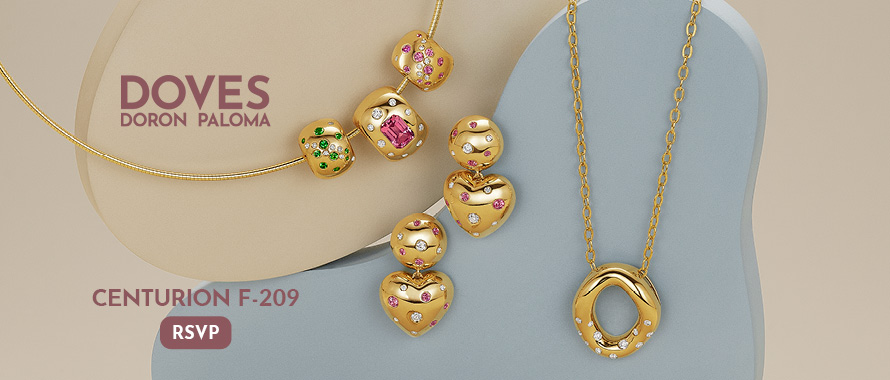Sales Strategy
(Sales) Counter Intelligence: Scientific Study Proves Platinum Beats White Gold For Security, Gem Setting May 05, 2021 (0 comments)

New York, NY—Platinum Guild International (PGI) has released the findings of a formal independent study proving the metal’s superior ability in wear resistance and gem setting security versus that of gold jewelry. Conducted by femResearch Institute Precious Metals + Metal Chemistry, in association with TechForm Advanced Casting Technology and PGI, the study aimed to characterize the metal’s reported wear superiority.
The most recent phase of research represented the third in a series of platinum wear testing studies, spanning a period from 2016 to 2020.
Although the studies were deeply technical, key conclusions established by the study are two-fold and easily communicated by sales associates at the counter: platinum alloys demonstrate superior wear resistance over white gold alloys. Also, the absolute and relative volume losses of the platinum alloys were demonstrated to be lower than that of the gold alloys.
Bench jewelers have long observed that older pieces of platinum jewelry are often in sound shape without extensive repairs, and there is an infrequent need to re-tip platinum prongs versus gold prongs. As platinum is regarded as the best metal to most securely hold a diamond, the study was also conducted to measure the differences in performance of platinum alloys versus gold alloys regarding prong wear. Platinum shanks do not tend to wear thin or need replacements as often as gold shanks.
Huw Daniel, CEO of PGI shared, “This research has provided conclusive evidence that platinum is without doubt, the superior precious metal for fine jewellery. Its beauty is matched by performance characteristics that include better wear over time, and the securest setting for diamonds, good reasons to provide peace of mind to jewelers and consumers around the world.”
Six alloys were studied for the research: two platinum alloys (950 PtRu, 950 PtIr) and four gold alloys (14K AuNi, 18K AuNi, 14Kt AuPd, and 18K AuPd). The alloys were analyzed under five separate processes, including scratch testing, wear testing, corrosion testing, mechanical properties testing, and metallographic examination via optical and scanning electron microscopy.
“After years of testing, these comprehensive findings confirm significantly lower volume loss on platinum jewelry alloys versus common white gold jewelry alloys” said Teresa Frye, President of TechForm Advanced Casting Technology. “Through the use of standardized testing designed for jewelry purposes, we were able to successfully replicate observations of platinum’s superior wear resistance made by bench jewelers across the world.”
A final phase of research with additional alloys used across international markets is currently being conducted. The report’s published results in the Johnson Matthey Technology Review (JMTR) are available here and will be included in the upcoming July issue of the JMTR.

Platinum alloys (in blue) show volume loss up to 3x lower compared to 18k palladium white gold, and a factor of about 2x lower compared to 14k palladium white and both 14k and 18k nickel white gold.






